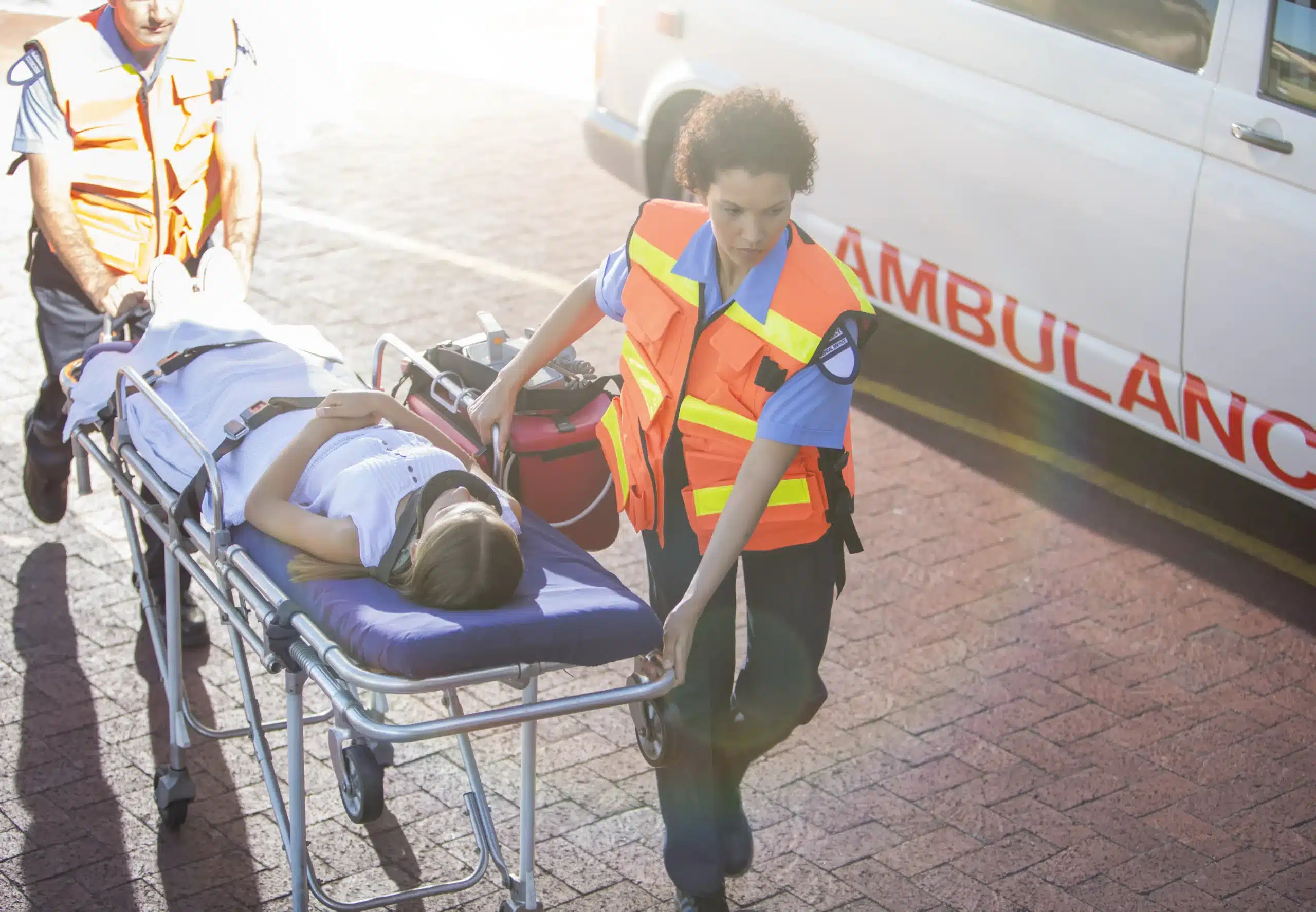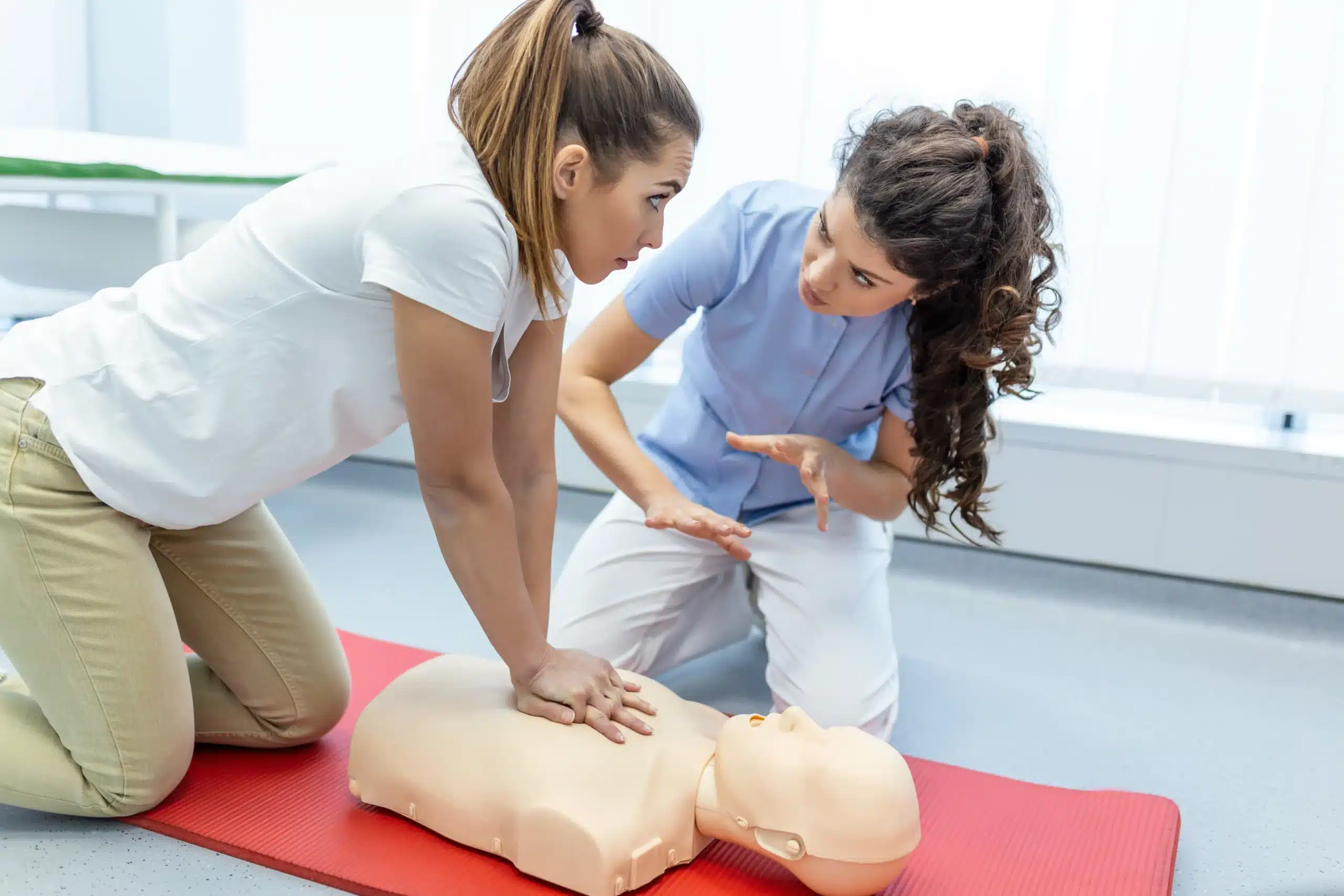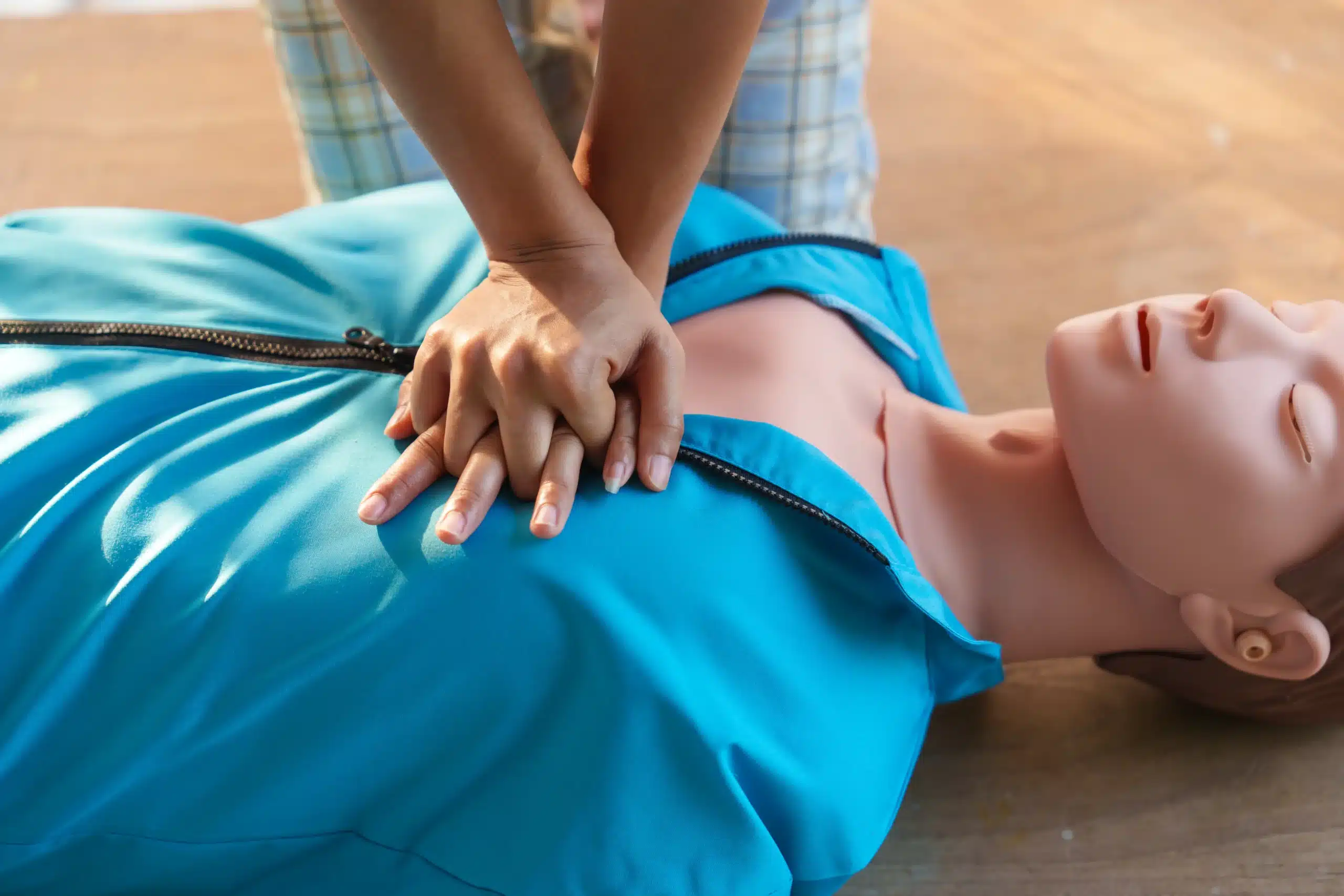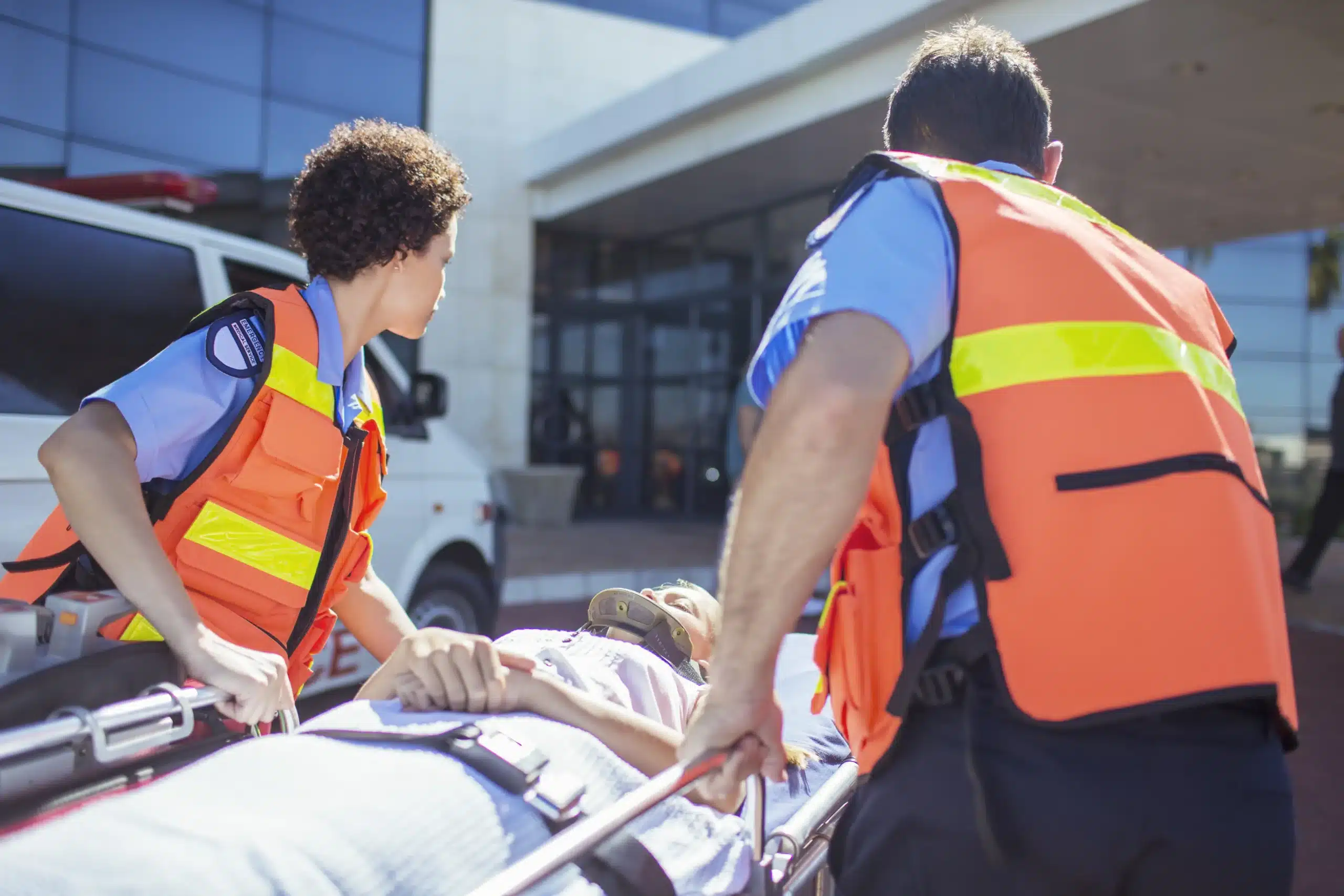Learning first aid is like adding a superpower to your everyday life. It’s about more than just bandages and scrapes; it’s about having the confidence to step in when someone needs help, from a minor cut to a life-threatening emergency. If you’ve been searching for “first-aid classes near me,” you’re in the right place. This guide breaks down everything you need to know about first-aid training, from what to expect in a class to how to choose the right course for your needs. We’ll also explore the benefits of certification, the importance of refresher courses, and how first-aid knowledge empowers you to make a real difference in your community. Let’s get started!
Key Takeaways
- First aid is a powerful tool: It equips you with practical skills to handle medical situations, builds your confidence in emergencies, and makes your community safer. Being trained allows you to respond effectively to both minor incidents and life-threatening events.
- Choose a class that fits your life: From basic to advanced, online to in-person, there’s a first-aid class for everyone. Consider your current knowledge, schedule, and learning preferences to find the best fit. Providers like Safety Training Seminars offer a range of options to meet diverse needs.
- Be ready to learn and practice: First aid is a hands-on skill. Come to class prepared to participate actively, ask questions, and engage in practical exercises. Regular refreshers are key to maintaining your skills and staying up-to-date with best practices.
What are First-Aid Classes?
First-aid classes teach you how to respond to medical emergencies. From minor cuts and scrapes to more serious situations, these classes give you the skills to help someone until professional medical help arrives. There are different levels of first-aid training, so you can find a class that matches your needs.
Basic First Aid
Basic first-aid classes cover essential life-saving procedures. You’ll learn how to assess a situation, control bleeding, manage burns, care for sprains, and handle other common injuries. Many basic first-aid courses also include CPR training, which teaches you how to perform cardiopulmonary resuscitation. These classes are perfect for anyone who wants to be prepared for everyday emergencies. Safety Training Seminars offers a variety of first-aid and CPR classes in Sacramento.
CPR and AED Training
CPR and AED training goes hand-in-hand with first aid. CPR teaches you what to do if someone’s heart stops beating, including chest compressions and rescue breaths. AED training shows you how to use an automated external defibrillator, a device that can help restart a heart. This combined training is crucial for responding to cardiac emergencies.
Advanced First Aid
Advanced first-aid classes are designed for people who need more in-depth knowledge, such as healthcare providers, lifeguards, and wilderness guides. These courses cover more complex medical situations and may include training on administering medications, managing allergic reactions, and using specialized equipment. Check with your certifying organization for details on advanced first-aid certifications.
Specialized Courses
Beyond general first aid, there are specialized courses for specific needs. For example, Pediatric First Aid focuses on caring for infants and children, while wilderness first aid teaches you how to handle medical emergencies in remote locations. Safety Training Seminars offers a variety of specialized courses, including the EMSA Child Care Health & Safety program. These specialized courses provide targeted training for specific environments and populations.
How Much Do First-Aid Classes Cost?
Knowing the cost of first-aid training is an important step in finding the right class for you. Let’s break down the typical price ranges, explore available discounts, and highlight Safety Training Seminars‘ commitment to affordability.
Average Price Range
First-aid classes, including CPR and BLS certification, vary in price depending on the level of training and the provider. Combined courses, like those that bundle CPR, AED, and first-aid training, often offer more value. You can find options starting as low as $69 for a comprehensive five-hour course covering essential life-saving techniques, like CPR and defibrillator use, along with basic first aid. This represents a substantial discount from the regular price of $120, making these vital skills more accessible. For more pricing and course options, browse these first-aid class deals. Safety Training Seminars, for example, offers American Heart Association CPR, BLS, ACLS, PALS, and First-Aid courses starting from $105 at various locations across Northern California.
Discounts and Promotions
Many training providers offer discounts and promotions, making these essential courses more accessible. Look for deals on combined courses, which can sometimes offer significant savings compared to taking each course individually. Promotional rates are often available for classes designed for the general public, including fitness instructors and caregivers, such as the Heartsaver CPR/AED/First-Aid class. These discounts can make a real difference in getting the training you need at an affordable price. Visit Safety Training Seminars for their latest offers. They also have a low price guarantee.
Safety Training Seminars’ Low Price Guarantee
Safety Training Seminars is committed to providing high-quality, affordable first-aid and CPR training in a low-stress environment. They understand that cost can be a barrier, and they strive to make their courses accessible to everyone. In addition to competitive prices, they also provide a low-price guarantee, ensuring you get the best value. They also offer convenient onsite classes for businesses and organizations.
How Long Do First-Aid Certifications Last?
Knowing how long your first-aid certification lasts is key to staying prepared for emergencies. Let’s explore the typical timeframe and discuss why refresher courses are so important.
Typical Class Duration
Combined first-aid, CPR, and AED training usually takes about five hours. This allows enough time to learn essential life-saving skills and practice hands-on techniques. Our CPR, AED, and First-Aid class at Safety Training Seminars follows this standard, offering comprehensive instruction in a manageable timeframe.
Certification Longevity
After completing your training and assessments, your first-aid certification is typically valid for two years. This standard two-year period encourages regular refreshers, ensuring you stay current with the latest guidelines. Check your certification card for the specific expiration date.
Why Take Refresher Courses?
Even with a valid certification, periodic refresher courses are a good idea. Medical knowledge and emergency procedures can change, and these courses help you maintain sharp skills and confidence. Regularly practicing these skills can make all the difference in a real emergency. Plus, a refresher course can reinforce best practices and address any misconceptions about first aid you might have.
Who Can Take First-Aid Classes?
First-aid classes are designed to be accessible to a wide range of people. Whether you’re a medical professional, a childcare provider, a teacher, a parent, or simply someone who wants to be prepared for emergencies, first-aid training is a valuable skill. Let’s explore some common questions about who can participate:
Age Restrictions
While first-aid knowledge is beneficial for people of all ages, some classes may have minimum age requirements. These restrictions often align with state or city regulations and the complexity of the course material. For example, certification courses like CPR/AED for Professional Rescuers may have age restrictions, while basic first-aid classes are often open to younger participants. Check with your chosen training provider, like Safety Training Seminars, for specific age requirements.
Physical Capabilities
First-aid training involves both theoretical learning and practical skills. While some physical actions are involved, such as performing CPR or applying bandages, modifications and accommodations can often be made for individuals with physical limitations. The goal is to empower everyone with the knowledge and confidence to respond effectively in emergencies. If you have concerns about your physical capabilities, discuss them with your instructor or training center beforehand. They can offer guidance and support to ensure you get the most out of the training.
Prerequisites
Generally, there are no prerequisites for taking a basic first-aid class. These courses are designed for beginners and assume no prior medical knowledge. However, more advanced certifications, such as ACLS (Advanced Cardiovascular Life Support) or PALS (Pediatric Advanced Life Support), may require proof of current healthcare provider status or completion of prerequisite courses. When choosing a first-aid course, make sure it aligns with your current skill level and goals. Look for recognized certification programs with quality training, like those offered by Safety Training Seminars.
Find a First-Aid Class Near You
Choosing the Right Class
First-aid courses teach essential skills to handle emergencies. The best class for you depends on your specific needs. Ask yourself: What situations am I most likely to encounter? For everyday life, a basic first-aid class may be enough. But healthcare providers, daycare workers, or those in high-risk jobs often need more advanced training, such as CPR certification. Consider your current skills and choose a class that builds on your existing knowledge.
Online vs. In-Person
Deciding between online and in-person classes depends on your learning style and schedule. Online courses offer flexibility, allowing you to learn at your own pace. In-person classes provide hands-on practice and direct interaction with instructors. Many organizations now offer blended learning, combining online modules with in-person skills sessions. This approach gives you the best of both worlds. No matter the format, make sure the curriculum is developed by medical experts. The American Red Cross is a good example of this.
Local Class Options
Safety Training Seminars offers various American Heart Association courses, including CPR, BLS, ACLS, PALS, and first-aid training in Sacramento, Roseville, and Rocklin, California. You can sometimes find us on Groupon for special discounts. We’re committed to affordability, offering a low price guarantee for our Sacramento County customers. Check out our website for more details about our courses. You can also find additional CPR and first-aid resources and local class options on websites like Folsom CPR Classes.
What Happens in a First-Aid Class?
Curious about what goes on in a first-aid class? It’s a mix of instruction, hands-on practice, and myth-busting, creating a well-rounded learning experience. Here’s a glimpse of what you can expect:
Classroom Instruction
First-aid classes usually start by covering basic principles and guidelines. Instructors introduce core concepts like assessing a scene for safety, recognizing signs and symptoms of various injuries and illnesses, and knowing when to call 911. This foundational knowledge helps you make sound decisions in emergencies. Expect discussions on topics like wound care, controlling bleeding, managing burns, and recognizing the signs of a heart attack or stroke. First-aid training gives people the skills to handle a range of medical situations effectively.
Hands-On Practice and Skills Assessment
Theory is important, but practical application is key. First-aid classes emphasize hands-on learning. You’ll practice essential skills, such as applying bandages and dressings, using a tourniquet, and performing CPR. You’ll learn basic first aid and how to handle common emergencies. Instructors offer guidance and feedback, helping you build confidence and competence to use these skills in real-life situations. This hands-on practice reinforces your understanding and prepares you to act quickly and efficiently under pressure.
Debunking First-Aid Training Myths
Many misconceptions about first aid are out there. A good first-aid class addresses and corrects these myths, offering evidence-based information and best practices. For example, you might learn that putting butter on a burn isn’t recommended, or that tilting your head back during a nosebleed isn’t the best approach. Dispelling these myths creates a more accurate understanding of first aid and empowers people to provide safe and appropriate care.
First-Aid Classes in Sacramento
Safety Training Seminars Offerings
For high-quality, affordable first-aid training in Sacramento, look no further than Safety Training Seminars. We offer a comfortable learning environment and provide CPR, AED, and first-aid training to individuals and groups. Our classes are available in both English and Spanish, making them accessible to a wider audience. We pride ourselves on offering the lowest prices in Sacramento County, with a low-price guarantee.
Other Local Training Providers
While we believe Safety Training Seminars offers the best value, we understand you might want to explore all your options. Here are a few additional providers offering first-aid classes in the Sacramento area:
American Red Cross
The American Red Cross offers a range of first-aid classes in Sacramento. Their programs cater to various groups, from individuals to workplaces and schools.
National Safety Council
The National Safety Council provides first-aid training programs aligned with OSHA best practices. They offer cost-effective courses and can even tailor training to an organization’s specific needs.
St. John Ambulance
St. John Ambulance offers a variety of first-aid courses designed for different situations, including workplace safety and emergency response. They are known for their high-quality training programs. (Note: St. John Ambulance primarily operates in Canada; its availability in Sacramento may be limited.)
American Heart Association
Safety Training Seminars is proud to be a woman-owned AHA Training Center. We offer various American Heart Association courses, including CPR, BLS, ACLS, PALS, and first aid. Our training equips participants with the skills they need to save lives.
Why Learn First Aid?
Knowing first aid can make a real difference in a variety of situations, from everyday mishaps to life-threatening emergencies. It empowers you to take action and provide immediate care when it matters most. Let’s explore some key reasons why learning first aid is a worthwhile investment.
Life-Saving Skills
First aid equips you with practical skills to handle a range of medical situations. You’ll learn how to control bleeding, care for sprains and strains, stabilize broken bones, and even perform CPR. These skills can be crucial in emergencies, potentially saving lives. Being trained to use an automated external defibrillator (AED) can also significantly improve survival rates in cases of sudden cardiac arrest. These are essential skills that can help you respond effectively in critical situations. Learn more about our CPR classes.
Confidence in Emergencies
Imagine encountering an accident or medical emergency. Would you feel confident and prepared to help? First-aid training provides the knowledge and skills to respond effectively under pressure. This confidence can be invaluable, allowing you to stay calm and take decisive action when seconds count. It also helps dispel common misconceptions about first aid, ensuring you provide appropriate care based on evidence-based practices. Safety Training Seminars offers comprehensive first-aid and CPR training to prepare you for such scenarios.
Workplace Safety
Many professions require or benefit from employees with first-aid certifications. CPR and first-aid training are often mandatory for childcare providers, teachers, coaches, construction workers, and other professionals. Having trained personnel on-site ensures a safer work environment and a quicker response to workplace incidents. This not only protects employees but also demonstrates a commitment to safety and preparedness. Check out our low price guarantee for affordable training options.
Community Preparedness
Learning first aid doesn’t just benefit you; it benefits your entire community. By being trained, you become a valuable resource for your family, friends, and neighbors. You can provide assistance during everyday incidents like minor cuts and burns, as well as respond effectively in more serious situations. A community with more people trained in first aid is a more resilient and prepared community. Consider taking a first-aid class to become a more active and helpful member of your community. We also offer RQI classes.
Prepare for Your First-Aid Class
So, you’ve decided to learn first aid—fantastic! Knowing how to respond to emergencies is a powerful skill. To make the most of your upcoming class, here’s how to prepare:
What to Bring
First-aid classes are hands-on, so you won’t need much. Comfortable clothing is key, as you’ll be practicing techniques like CPR and bandaging. A notebook and pen might be helpful for taking notes, though your instructor will likely provide key takeaways. Most importantly, come prepared to learn. Quality training, like that offered at Safety Training Seminars, provides a recognized certification upon completion.
Get Ready
Learning first aid is empowering. It equips you with the skills to handle a range of medical situations, from minor cuts to more serious injuries. A good first-aid course blends classroom instruction with hands-on practice, giving you the confidence to respond effectively. Before your class, consider any questions you have about first aid. Reviewing basic anatomy or common medical terms can be helpful, but it’s not required. Be prepared to participate actively and ask questions—your instructor is there to guide you. And remember, learning first aid is an ongoing journey. Staying up-to-date on the latest practices ensures you’re always ready to help. Check out this helpful resource on common first-aid misconceptions to start with accurate information.
Related Articles
- First Aid Training in Roseville: A Complete Guide – Sacramento CPR Classes
- First Aid Training in Sacramento: A Complete Guide – Sacramento CPR Classes
- First Aid Training Sacramento: A Comprehensive Guide – Sacramento CPR Classes
- CPR & First Aid in Sacramento: Your Guide – Sacramento CPR Classes
- Adult & Pediatric First Aid/CPR/AED Certification 101 – Sacramento CPR Classes
Frequently Asked Questions
How do I choose the right first-aid class for me? Consider your current knowledge, your profession, and the types of emergencies you’re most likely to encounter. A basic class is great for general knowledge, while healthcare providers or those in high-risk jobs often need more advanced training like CPR or specialized certifications.
What’s the difference between online and in-person first-aid classes? Online classes offer flexibility for learning at your own pace, while in-person classes provide hands-on practice and direct interaction with instructors. Blended learning, which combines both formats, is also a popular option. Choose the format that best suits your learning style and schedule.
How long is a typical first-aid class, and how long is the certification valid? Combined first-aid, CPR, and AED classes usually take around five hours. Certification is typically valid for two years, after which a refresher course is recommended to stay up-to-date with the latest guidelines and maintain your skills.
Are there any prerequisites or age restrictions for taking a first-aid class? Generally, no prerequisites are needed for basic first-aid classes. However, advanced certifications may require proof of healthcare provider status or completion of other courses. Age restrictions can vary, so check with the specific training provider for their requirements.
Where can I find first-aid classes in Sacramento? Safety Training Seminars offers a variety of first-aid and CPR classes in Sacramento, Roseville, and Rocklin. Other providers in the area include the American Red Cross, the National Safety Council, and potentially St. John Ambulance (availability may vary). Check their websites for course schedules and details.







